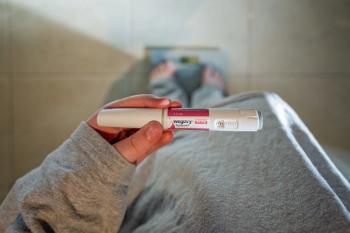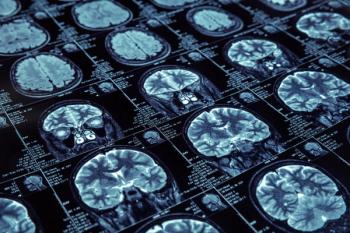
- Volume 0 0
INSOMNIA WATCH
Study Examines State of Insomnia Therapy
A recent review article in Chest (July 2006) presented aninteresting summary of the state of insomnia evaluation andtreatment. Despite the high prevalence of insomnia and considerableprogress made in its treatment, many clinicians stillhave difficulty properly addressing this disease.
In the United States, the annual cost attributed to insomniais conservatively estimated at $92.5 billion to $107.5 billion,which makes the condition one of crucial public health importance.Key advances have recently been made in classifying,evaluating, and treating the disease. The value of some insomniaresearch, however, has not been completely realized, inpart because of a lack of standardized insomnia definitions.
Improvements in patient assessment and outcome, as wellas continued research efforts, also have likely been hampered.Fortunately, effective insomnia therapies exist. Intermediate-actingbenzodiazepines are one commonly used option.
The authors conclude that, as the research and clinicalguidelines for insomnia are fine-tuned and validated, physicianunderstanding of the disorder will continue to grow, andpatient success is likely to increase.
Data Show Temazepam Is Effective at High Altitude
Benzodiazepine agents safely and effectively induce sleep, butsome patients may have concerns about the potential effects ofthis drug class. During a symposium of the Royal College ofPhysicians of Edinburgh (September 2005), researchers demonstratedthe value of temazepam for inducing sleep at higher elevations,where sleep disruption is common and low levels of oxygenare a serious concern.
The efficacy and safety of temazepam 10 mg were assessedin a double-blind, crossover, randomized study involving a groupthat had undertaken a 17-day trek in the mountains of Nepal.These patients found the drug to be an effective and safe sleepagent. Oxygen saturation, for example, was not reduced in a clinicallysignificant manner in the trekkers who used temazepam.Equally important, temazepam did not significantly impair nextdayvigilance or reaction time, compared with the placebo.
The researchers noted the fact that acute mountain sicknessafflicted temazepam-treated and untreated trekkers equally.The study confirmed the value of temazepam as an anti-insomniaagent that also may be used in nontraditional settings andpatient groups.
Zopiclone Versus CBT
Research has suggested that both pharmacologic andpsychological therapies have a place in treating insomnia.Yet, there have been few direct comparisons of these treatments.As reported in the Journal of the American MedicalAssociation (June 2006), one widely used psychologicalintervention, cognitive behavioral therapy (CBT), appearedto have advantages over a nonbenzodiazepine medication.
In the study of adults aged >55 years, who were afflictedwith chronic primary insomnia, the efficacy of zopiclone 7.5mg was compared with that of CBT in a randomized, double-blind, placebo-controlled trial involving a 6-week treatmentperiod. Overall, CBT resulted in improved short-andlong-term outcomes in 3 of 4 sleep-efficacy assessments,versus zopiclone dosed once nightly. In fact, zopiclone didnot differ from placebo in most measures of insomniaimprovement.
CBT improved patients' sleep efficiency from approximately81% pretreatment to 90% posttreatment, whereasthe efficiency of zopiclone patients decreased slightly at follow-up. Those who underwent CBT spent more time inslow-wave sleep and less time awake than either the zopicloneor the placebo patients.
Research EvaluatesZolpidem Dependence
Despite a unique neurobiologicalmode of action that is differentfrom classical insomniaagents, nonbenzodiazepines suchas zolpidem have a potential riskfor patient abuse and dependence,according to the authors ofan article published in the March2003 issue of the Journal ofPsychopharmacology.
A number of reports of zolpidemdependence appear in thescientific literature, including 8new cases that occurred inGreece. The authors reviewedcases of zolpidem abuse anddependence in patients whowere prescribed the drug totreat insomnia. All of these zolpidemabusers reported cravingthe drug's anxiolytic and stimulanteffects but not its sedativeeffects. The researchers notedthat 7 of the patients also hadno history of substance abuse—the primary factor that was previouslythought to contribute tozolpidem dependence.
The authors hypothesizedthat zolpidem taken in highdoses may result in a lessselective activity at α1 subunit-containingγ-aminobutyric acidA type benzodiazepine receptorsand thus produce adverseeffects. They also discussed theclinical ramifications of thisphenomenon and the possibilityof a zolpidem abuse "syndrome" characterized by severedependence, memoryproblems, and euphoria.
Articles in this issue
about 19 years ago
Equation for Success: Diabetes Medication, Diet, and Exerciseabout 19 years ago
Rx Product Newsabout 19 years ago
OTC Product Newsabout 19 years ago
can you READ these Rxs?about 19 years ago
Juvenile Anabolic Steroid Abuseabout 19 years ago
Compounding Hotlineabout 19 years ago
RESPy AWARD: A Role Model for Pharmacy Studentsabout 19 years ago
Ouch! Time for Flu Shotsabout 19 years ago
Supreme Court Declines to Review Generic Marketing PactsNewsletter
Stay informed on drug updates, treatment guidelines, and pharmacy practice trends—subscribe to Pharmacy Times for weekly clinical insights.

















































































































































































































